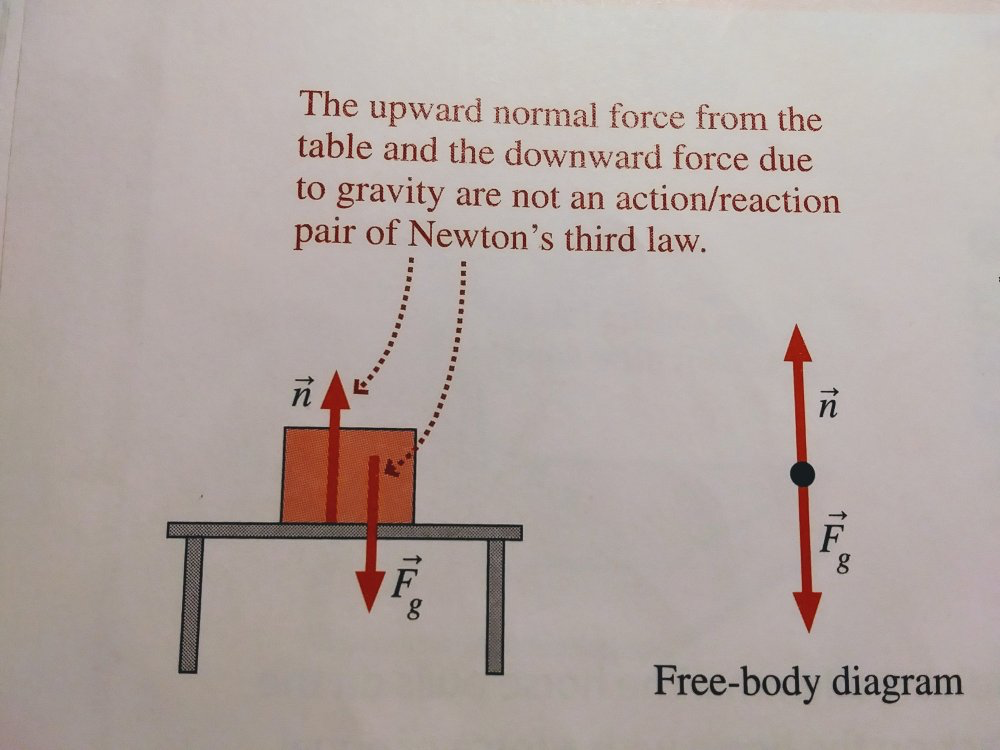Leaderboard
Popular Content
Showing content with the highest reputation on 06/01/20 in all areas
-
It’s amazing how quickly their position switched from “recommending that people wear masks when they’re out in public is tyranny!” instead to “the government can shoot dead anyone who is out on the street at night and they can do so for any reason.”2 points
-
I doubt there was intent to murder and likely the cop thought what he was doing would not kill the man - especially with bystanders recording. A bit of time honored unofficial "teach the scum a lesson", perhaps intended for the bystanders more than George Floyd, but gone wrong? Perhaps every attempt George made to struggle and shift to get a breath was taken as defiance - and so he was held down harder and longer? The rioting and destruction of property is counterproductive of course - and it won't matter that the vast majority of protest was/is peaceful. I don't know how Americans will reconcile their own history re Boston Tea Party being celebrated with property destruction as protest being innately wrong now; my own view is it WAS wrong back then too. I tend to see social unrest as inherently chaotic and easily incited to destruction and violence and it is potentially hugely expensive - that if legitimate and widespread grievances are not dealt with that kind of outcome becomes more likely. Not that property destruction is legitimate or that it will get the results wanted, but that it is a predictable outcome that good governance prevents.2 points
-
Perhaps because we are living through a post-apocalyptic movie, the forum seems to be attracting a larger that usual number of people with their own wacky ideas about how the world works. So I put this together, partly based on my own observations but also a few pinched from the Crackpot Index (http://math.ucr.edu/home/baez/crackpot.html).1 point
-
I've heard a libertarian translate JFKs words as "Ask not what those in power can do for you...ask what you can do...for those in power"1 point
-
As a metallurgist and chemist, and someone who has worked in the mining industry, I am going to call BS on that one: Regular soil never holds what is essentially an ore grade of 6.8%. That is well over 1000 times the ore grade of even the highest grade gold ores in the entire world, let alone PGM's. Basically that guy is full of crap. Based on the first claim there is not much hope that that claim would be any more credible than the first one.1 point
-
1 point
-
Would that be a bad thing? I do myself subscribe to the idea that those in power should be held to higher standards than those that are not, and that if you do something wrong or abuse your power, you should be punished more severely (the higher you are, the longer the fall. comes to mind).1 point
-
Here I think you're being persuaded by a subtle misconception. When entropy has reached a maximum, the system has undergone total thermalization and nothing statistical depends on time. Things keep changing, but only microscopically. All the physical parameters are fixed at their average value. Any changes will manifest themselves in second order effects or fluctuations. If temperature is high, the system will be very efficient at erasing these deviations from equilibrium very quickly. Some months ago, I developed a picture meant to illustrate these concepts, only for educational purposes, and inspired by some musings due to physicist Tony Zee, that temperature is some kind of inverse relaxation time for the system, or proportional to it. It probably overlaps with formalism that other people have developed, because in physics it's very difficult to come up with anything that's really original and new. So in your initial OP, there is already a problem, and I should have detected it right away had I been cleverer. Namely: Will entropy be low much of the time? There is no time in entropy. Entropy kills time. That's its job description. I have a perception that we're faced with entropy at the surface of a black hole, because something is killing time there too! But those are just speculations. Although I very much like your post. Those are very intelligent questions. +1 I hope that helps.1 point
-
@studiot said that when you will pass current through molten sodium chloride, there will be produced metallic sodium and chlorine gas.. But you did not say you will be passing current through it, but it is plausible thing which you maybe omitted in your OP.1 point
-
The diagram mentions gravity, that implies a third object: earth. Here's a list of third-law-force pairs I see in the diagram where a book is laying on a table standing on earth. First force -- Second force Downward force of gravity on the book exerted by Earth -- Upward force of gravity on Earth exerted by the book Downward force on the table exerted by the book -- Upward force on the book exerted by the table Downward force on the ground exerted by the table -- Upward force on the table exerted by the ground (one pair at each leg of the table) Downward force of gravity on the table exerted by Earth -- Upward force of gravity on Earth exerted by the table Note: third law pairs do not have to be contact forces.1 point
-
@drumbo For the most part mainstream plan or policy for transition to zero emission is NOT based on enforced energy poverty; high emissions infrastructure is not being prematurely closed without alternatives in place. Better policy, that accounts for potential inequality, is the best result emerging from studies that show potential for inequality. Climate policy, for all the lies that are made about it by climate responsibility denying opponents, is not about reducing prosperity, it is about preserving it in the face of accumulating and economically damaging global warming. I note that it is often people who have shown no enduring interest in reducing poverty or inequality who argue against climate action on the basis that reduced fossil fuel use increases them - many of whom, from lives of extraordinary plenty, fiercely oppose accountability and affordable carbon pricing on their emissions. Justified very often by claims the science on climate must be wrong. Assumption that the consequences and costs of continued rising emissions are not significant and therefore emissions reductions are not necessary requires turning aside from the mainstream science based expert advice. For people in positions of trust and responsibility to fail to heed the expert advice is dangerously irresponsible and negligent. But Alarmist - as in unfounded - economic fear of reducing and ultimately reaching near zero fossil fuel burning - has been a potent argument used to impede the legitimate policies and actions of those seeking ways to net zero emissions and the OP looks like an example. If you believe that a shift away from high emissions energy to low is a threat solely because it introduces change then that is an alarmist position. From the linked article - I would have to disagree with that last sentence from McGee - not using fossil fuels in the first place means avoided future emissions by alleviating energy poverty in those communities by other means than fossil fuels.1 point
-
Yes I agree, Turing took one of the many steps along the development of IT, he did not invent the Von Neuman architecture (I wonder who did that ?) Although originally a theoretical mathematician, Turing was also practical as evidenced by rewriting the intensively theoretical Godel theorems into a practical (if gedanken) setting). But modern IT is about more than just about one thing. It draws together many disparate aspects of technical knowhow. But it is difficult to list the many who contributed to the drawing together of the many different threads without missing someone out, or how far back to go in engineering history. For instance what would the internet be like without the modern display screen ? Should we include the development of these or printers or printing itelf? Fax machine were first invented in 1843. What about control programs? Turing is credited with the introduction of 'the algorithm'. But Hollerith invented the punch card in 1884. You need The laws of combination logic (Boole, De Morgan) The implementation of these in machines (Babbage, Hollerith, Felt) Methods of communication between machines (Bell , Bain, Hertz, Marconi) The formation of 'words' of data from individual combinations. Standardisation of these words - the language (Bemer) Moving from mechanical to electromechanical to electronic implementations of data structures (Von Neuman) So here is my (draft) shortlist of the development, apologies for any omissions. Babbage (1791 - 1871) the analytical engine De Morgan (1806 - 1871) De Morgan's theorem. Boole (1815 - 1871) Boolean algebra Bain (1810 - 1877) the Fax machine Bell (1847 - 1922) The telegraph telephone Hollerith (1860 - 1921) punch cards Braun Berliner (1851 - 1929) microphone (inter machine communications) - 1876 Braun (1850 - 1918) cathode ray tube (inter machine communications) - 1897 Felt (1862 - 1930) Comptometer 1887 Von Neuman (1903 - 1957) Digital computer architecture. Bemer (1920 - 2004) Standardisation of digital words. 1961 Interestingly names beginning with the letter B predominate, perhaps that was Turing's crime - to start his name with the wrong letter.1 point
-
What qPCR kit (or just enzyme) do you use? It depends on both the primers in question (how easily do they form primer-dimers) and the enzyme used, however I generally used 250 nM (for both the forward and reverse primers). Optimal primer concentration can only really be obtained by titration, but I have only done this (once) when initial results were dubious/contained primer-dimer peaks (increasing annealing temperature wasn't really viable/did not help either). When titrating, Thermofisher (Sybr Green) recommends checking the 100-500 nM primer range, however other researchers sometimes check between 50 nM and 900 nM (as of researchgate). https://www.thermofisher.com/nl/en/home/references/protocols/nucleic-acid-amplification-and-expression-profiling/pcr-protocol/sybr-greener-qpcr-supermix-universal.html1 point
-
I disagree that this is necessarily true - though i'm sure it is sometimes, maybe often, the case. Iff religious beliefs make an empirical statement that clash with the evidence then sure there will be dissonance. Then there will always be evidence gaps in which people can ferret certain beliefs which avoids this dissonance. But if religious beliefs make no such empirical claims then they can be entirely consistent with science. Another way of stating this is that religion (could) deal with the world as we experience it, science as the world is. Or that God does exist - as a human concept (and no less important for being so).1 point
-
The second link in OP (https://emilkirkegaard.dk/en/?p=7237) states that the 10% claim is "bullshit". It does not support the 10% claim and gives several reasons why the number may be incorrect. Talk page of wikipedia "List of nonreligious Nobel laureates" states "The main source of this article is not reliable": https://en.wikipedia.org/wiki/Talk:List_of_nonreligious_Nobel_laureates#The_main_source_of_this_article_is_not_reliable Good points, I'll add a local example. Wikipedia lists 32 swedish laureates. During the years of Nobel Prizes Sweden have made several changes* to how church and state are related. Those reforms could impact what individuals would have answered at that time compared to more present times. It would require a lot of rigor to be able to produce reliable definitions and a usable list. This is just an example, for one single country, intended to highlight the difficulty with this kind of material. *) https://www.svenskakyrkan.se/church-and-state until year 2000 state and church was united Swedish only found: http://www.notisum.se/rnp/SLS/lag/19510680.htm Until 1952 you had to belong to a religious community, you could exit stat church only if you registered at another religious community.1 point
-
Religious beliefs are based on 'faith', which requires no evidence or facts. Science is based on evidence and facts, and some people are more adept than others at determining/discovering that evidence or building models that attempt to explain those observations. On the other hand, sometimes being truly exceptional ( as Nobel prize winners are ) requires a 'leap of faith'. does that maybe explain how the two correlate ? ( I don't know, I'm just making this stuff up as I go )1 point
-
First the non-vascular bryophytes (mosses, liverworts, hornworts) during the Ordovician period (which started around 490 million years ago) that evolved from green algae. Mosses lack true leaves, true roots and vascular tissue. It therefore can’t conduct sugar or water through the plant, only diffusion and osmosis. Then came the vascular seedless plants (ferns, horsetails, clubmosses) during the Devonian period (which started around 420 million years ago). A fern is vascular, but still contains spores, just like moss, and thus a swimming flagellated sperm cells. The oldest-known vascular plants have been identified in deposits from the Devonian. One of the richest sources of information is the Rhynie chert, a sedimentary rock deposit found in Rhynie, Scotland. A rich diversity of fungi (that often live together with plants, or algae such as lichens) is also known from the Rhynie chert. (By the way, when the haploid spore germinates it generates a multicellular gametophyte by mitosis. Male gametophyte = anther (tip of stamen), female gametophyte = ovary. Both produces gametes. The sporophyte stage (growing phase, the non sexual part) is barely noticeable in these lower plants, or ‘spore plants’. In seedless vascular plants the diploid sporophyte became the dominant phase of the lifecycle.) Gymnosperms (from cycads to ginkgos to conifers), dominated the landscape in the early Triassic (about 250 million years ago) and middle Jurassic. Angiosperms (flowering plants) surpassed gymnosperms by the middle of the Cretaceous (about 100 million years ago. The same genes that are responsible for flower development in Amborella (ancient, basal angiosperm) are the same genes that are responsible for the male cones of the gymnosperms, so it seems that the flower developed from the male cone). - - - What I don't quite understand myself is how "Fungi probably colonized the land during the Cambrian, over 500 million years ago, (Taylor & Osborn, 1996". That would mean before the Ordovician period, and thus before plants came onto land. But how could they have survived without their counterpart symbiont to deliver them glucose? Maybe you (or somebody else) can help me with this question? Thanks.1 point
-
-1 points













